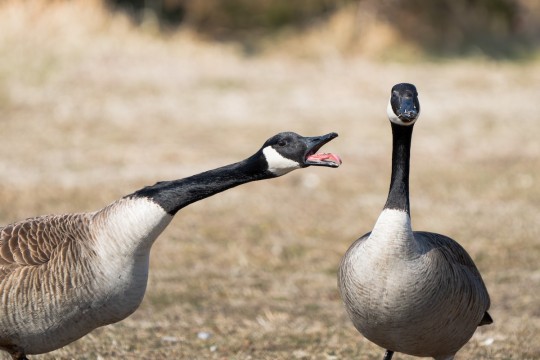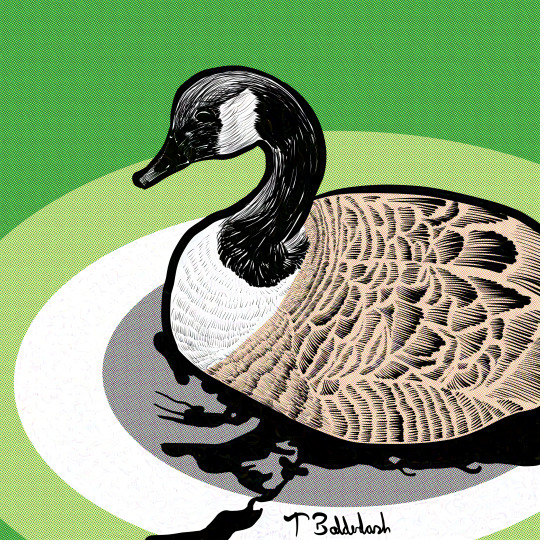#anseriform
Explore tagged Tumblr posts
Text

Whooper swans By: Unknown photographer From: Wildlife Fact-File 1990s
215 notes
·
View notes
Text


Masked Duck (Nomonyx dominicus), drakes (males) in breeding plumage - displaying, family Anatidae, order Anseriformes, Perú
photographs by Warren Perez Barrera
4K notes
·
View notes
Text

HONK!
#asexual#ace#ace pride#ace week#canada goose#branta canadensis#anatidae#anseriformes#waterfowl#bird#birb#birds#bird art#art#digital art#artists on tumblr#tw eyestrain#cw eyestrain#wauk wauk
5K notes
·
View notes
Text


Hooded Merganser (Lophodytes cucullatus). Male in the first photo and female in the second one. Family Anatidae, order Anseriformes.
Oklahoma City, Oklahoma, USA. January 2024.
#hooded merganser#Anatidae#anseriformes#birds#bird#bird photography#bird photos#wildlife#wildlife photography#animals#Oklahoma
713 notes
·
View notes
Text
Uncharismatic Fact of the Day
Horned? Check. Screamer? Definitely. The horned screamer is named for both the thin keratin 'horn' that grows from the top of its head and its loud, whooping call which can be heard over 3 km (1.8 mi) away!

(Image: A horned screamer (Anhima cornuta) by Bradley Hacker)
As a bonus, check out the horned screamer's unique call below:
youtube
441 notes
·
View notes
Text

happy valentine's day! i think mr. ruddy duck has something for you 🩵
#look up ruddy duck bubble display#i've gotten a few asks about what my favorite bird is#it's the ruddy duck#:0)#happy valentine's day#birds#bird art#artists on tumblr#ornithology#anseriformes#ruddy duck
443 notes
·
View notes
Text

January Endangered birds 7 (#66) - the Brazilian Merganser (CR)
Habitat loss of wetlands/rivers have been a big problem for these birds. In 1992, their numbers were estimated at less than 250! Three decades later, estimates are still at less than 250 adults - however, a decline is expected to have occurred, which might just mean the 1992 estimate was too low at the time.
#bird of the day#I made this at 11pm no thoughts and looking back theres so much I want to change#alas too late#merganser#animal art#procreate#digital art#artists on tumblr#anseriformes#anatidae
420 notes
·
View notes
Text

[ID: an illustration of a white swan facing to the left with its wings out. It has come in for a landing on the water, splashing stylized waves about itself. The background part the waves is starry blue. End.]
#00224
MUTE SWAN
Cygnus olor
CLASS AVES
ORDER ANSERIFORMES
Heavy birds native to Eurasia, they are monogamous and form strong pair-bonds. They are not actually mute - they make a variety of hisses, whistles, grunts, snorts, and chirps, as well as a rhythmic courtship song.
438 notes
·
View notes
Photo

Canada Goose (Branta canadensis)
© James Ancona
764 notes
·
View notes
Photo

Whooper Swan (Cygnus cygnus)
© Diego González Dopico
479 notes
·
View notes
Text

male eurasian wigeon (mareca penelope), ireland
#anseriformes#anatidae#mareca#eurasian wigeon#ducks#waterfowl#wildfowl#birds#birdwatching#bird photography#display flight
320 notes
·
View notes
Text

White-faced whistling ducks By: Unknown photographer From: Le Grand Fichier du Monde Animal 1975
#white-faced whistling duck#whistling duck#wild duck#duck#anseriform#bird#1975#1970s#Le Grand Fichier du Monde Animal
137 notes
·
View notes
Text

Cotton Pygmy Goose (Nettapus coromandelianus), male, family Anatidae, order Anseriformes, Kerala, India
photograph by Nidhin Basheer
4K notes
·
View notes
Text

Pondering amatonormativity
I'm trying to get over my cowardice when it comes to drawing feathers
#canada goose#goose#branta canadensis#anatidae#anseriformes#bird#birb#birds#bird art#ornithology#aromantic#aro#aro pride#art#digital art#artists on tumblr#tw eyestrain#cw eyestrain#wauk wauk
2K notes
·
View notes
Text







#poll#Class: Aves#Order: Anseriformes#Family: Anatidae#Genus: Cairina#Cairina Moschata#Range: Nearctic#Range: Neotropical
346 notes
·
View notes
Text

A muscovy duck (Cairina moschata) and ducklings swimming near Pompano Beach, Florida, USA
by Lee J. Sanders Photography
#muscovy duck#juvenile#ducks#waterfowl#birds#cairina moschata#cairina#anatidae#anseriformes#aves#chordata#wildlife: florida#wildlife: usa#wildlife: north america#invasive species
529 notes
·
View notes